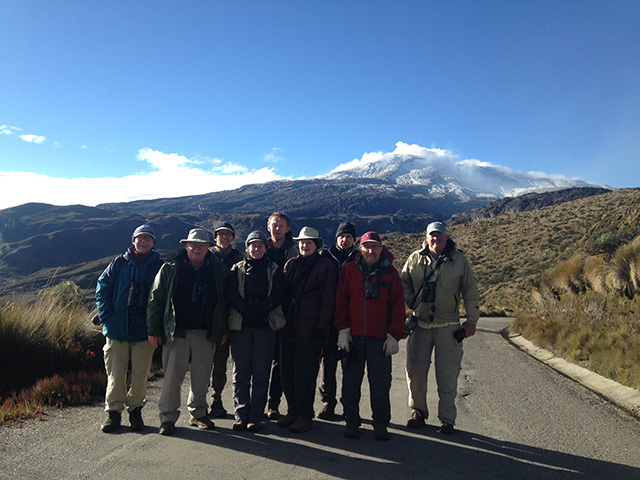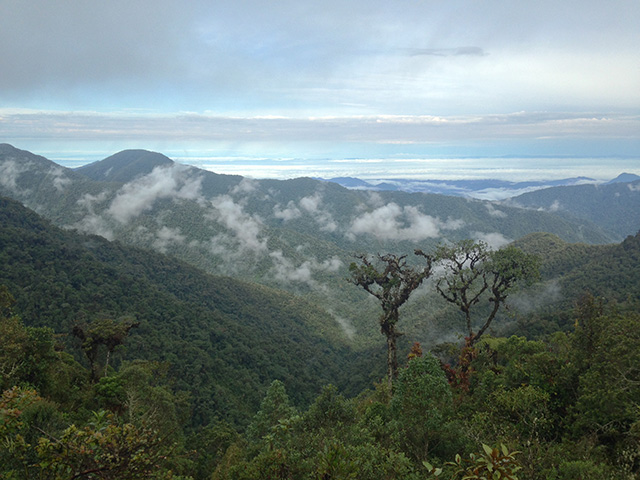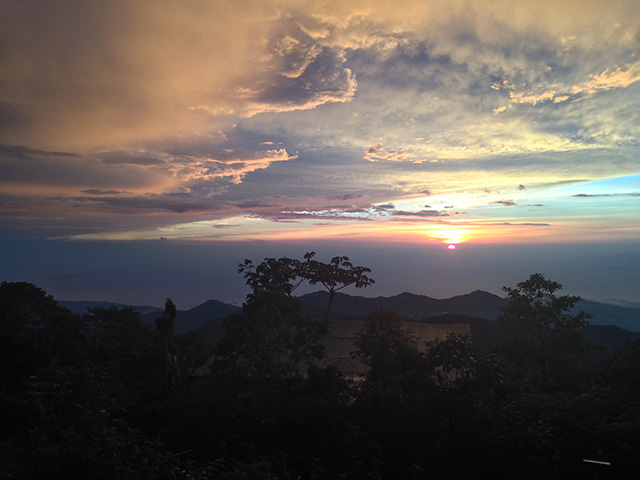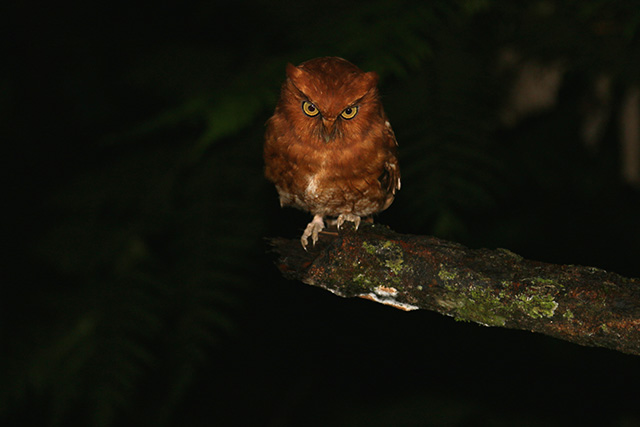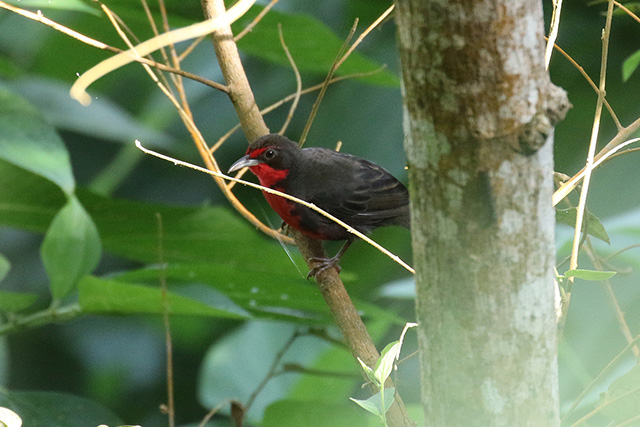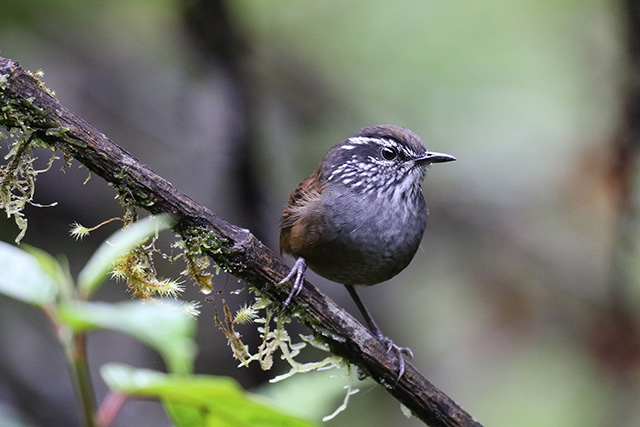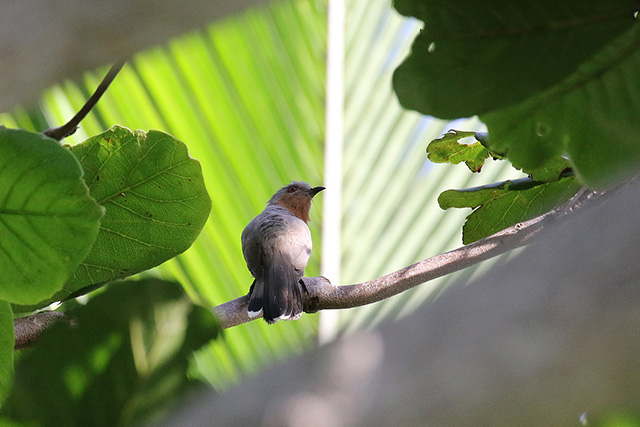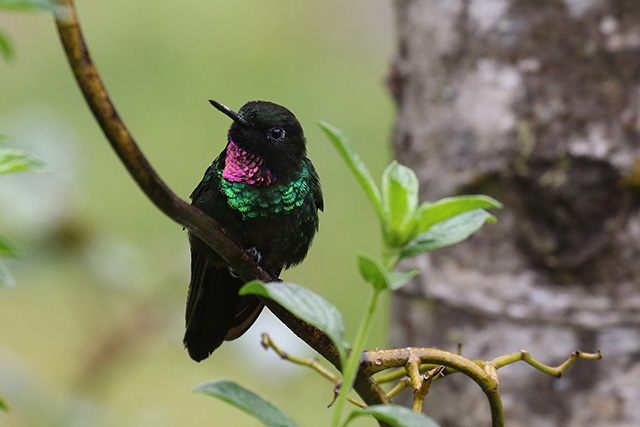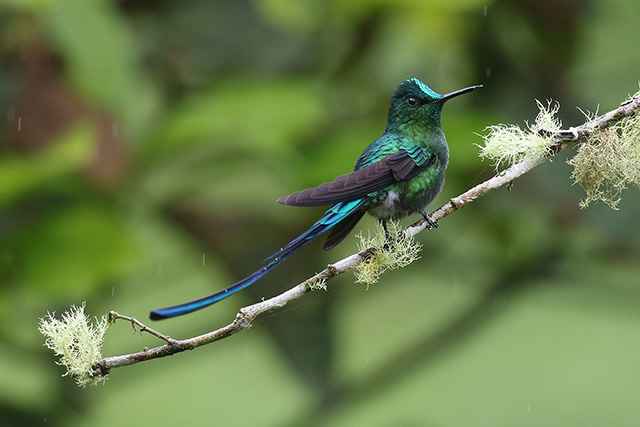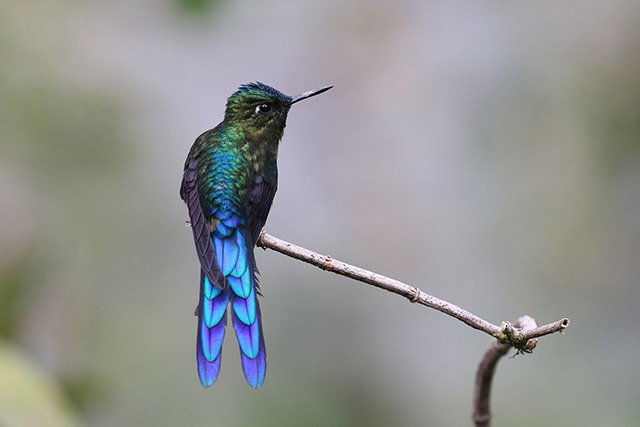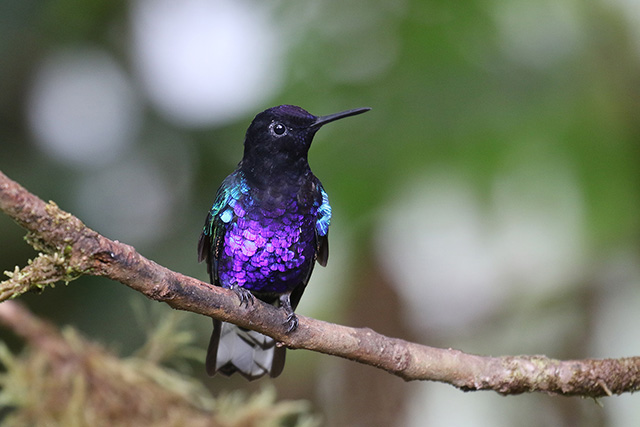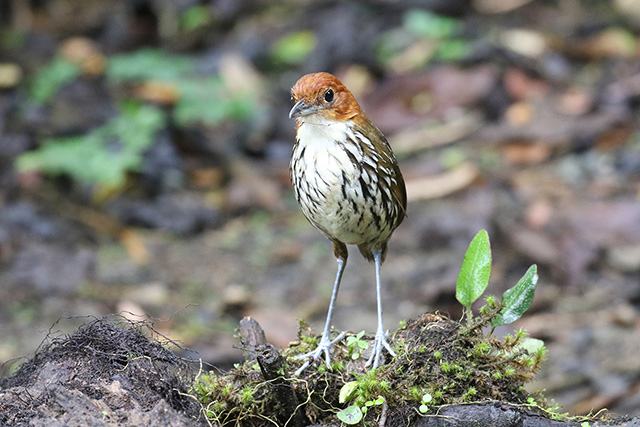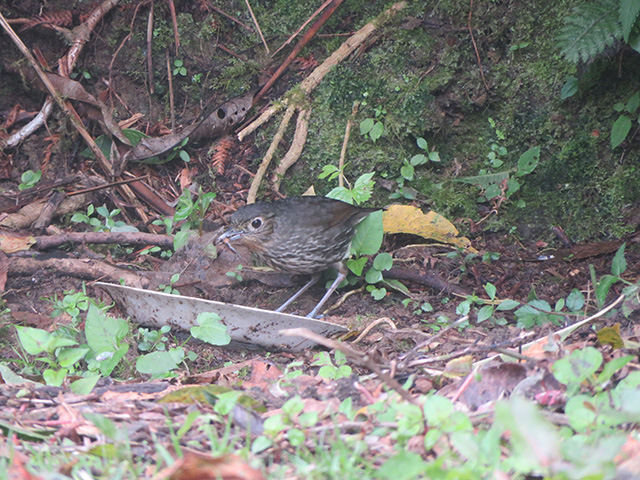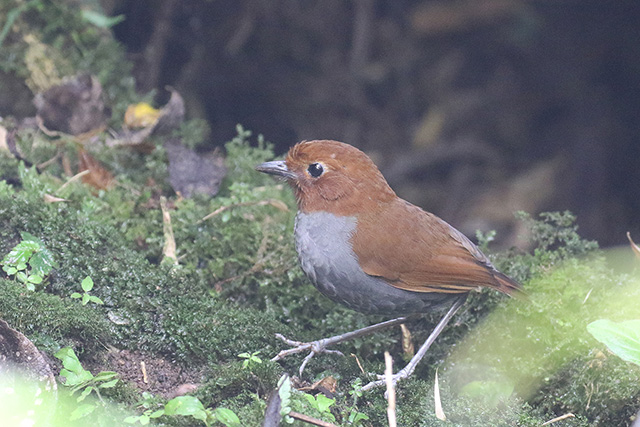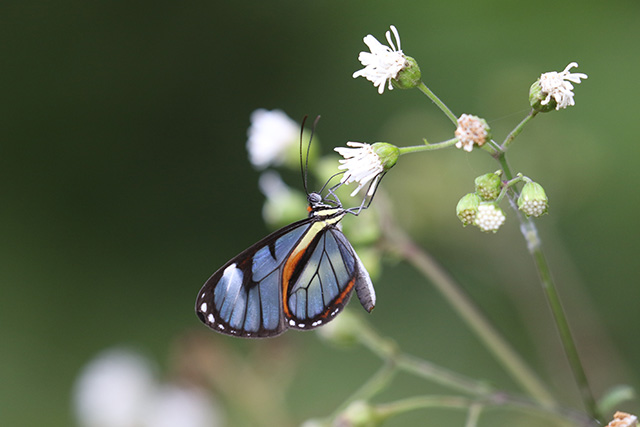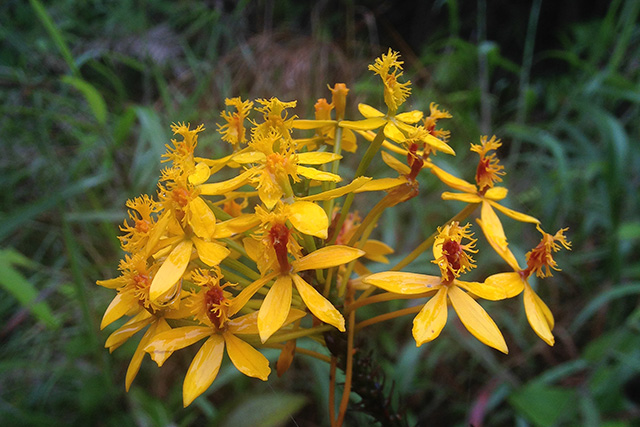From the Field
November 27:
Rich Hoyer on his recently-completed tour, Peru: Rainforest Lodges of the Madre de Dios
We had some marvelous experiences on our short tour visiting just two lodges in the rainforests of Peru's Madre de Dios department. At the wonderfully welcoming Los Amigos Biological Station, daily companions included a trio of Undulated Tinamous foraging on the open lawn, often right around our cabins. Nearby, sticking closer to the forest edge was an immature Rufescent Tiger-Heron as well, a very unusual occurrence in that habitat.
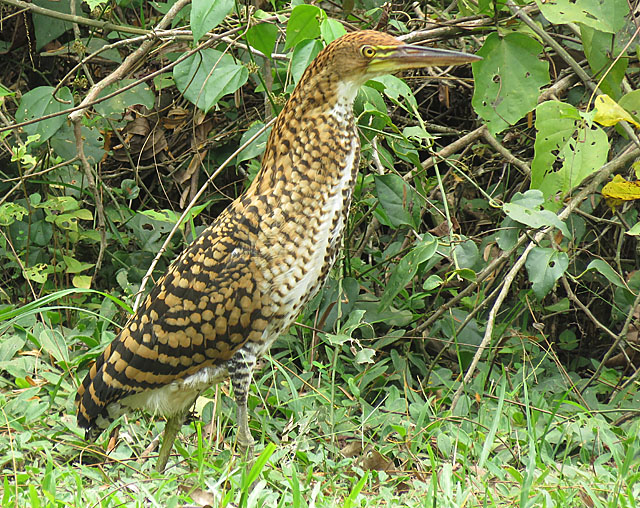
We rarely had to venture far from our rooms before stumbling into some really fun bird activity – either a mixed flock or a mob looking for an owl to harass, but some of our better finds were when things seemed very quiet at first – such as the covey of Starred Wood-Quail that nearly attacked us in response to an imitation whistle of a chick in distress. Or a nightjar flushed off the side of the trail, later determined to have been a rare Silky-tailed Nightjar. One of the favorite birds of the tour happened just like this when a lone Chestnut-capped Puffbird flew past the leader and landed just off the trail halfway past the group.
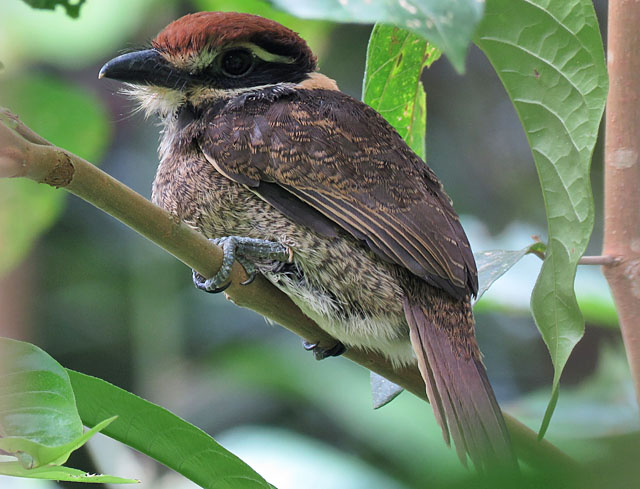
A totally different habitat was offered during our boat rides on the Madre de Dios and Tambopata rivers as we traveled to and from the lodges. One particularly memorable sighting was the sudden appearance of well over a hundred Sand-colored Nighthawks feeding over the river. On another day we had spectacular views of a pair of Horned Screamers very close on the shore.
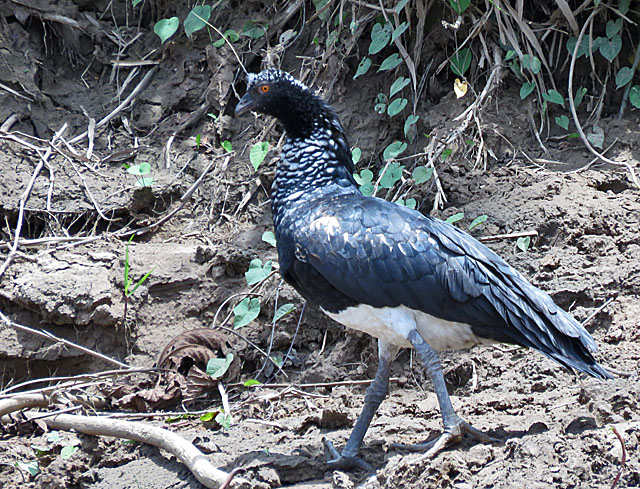
We had two different boat rides on old oxbow lakes, both providing some of the most delightful and peaceful birding on the trip. A Sungrebe and multiple kingfishers were highlights at one, and a Western Striolated-Puffbird (the Obama-bird, we called it, as it was only recently described and named after him) was very cooperative on the other lake. At both, however, we were treated to many views of the most bizarre but beautiful Hoatzin.
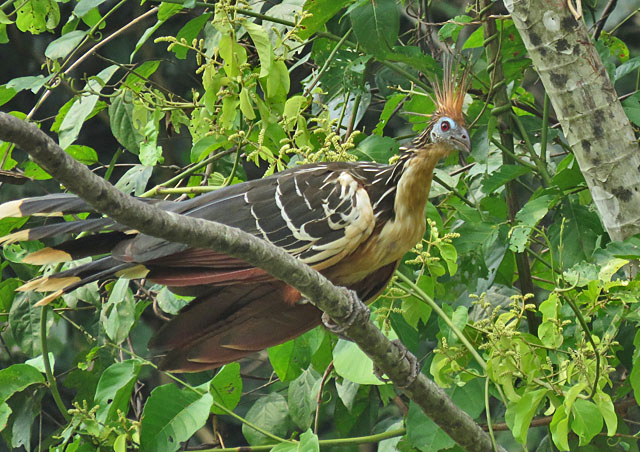
We had one early morning at a parrot lick, and while macaws didn't visit this morning, we still saw several species of parrots at close range, including a noisy mob of Dusky-headed Parakeets.
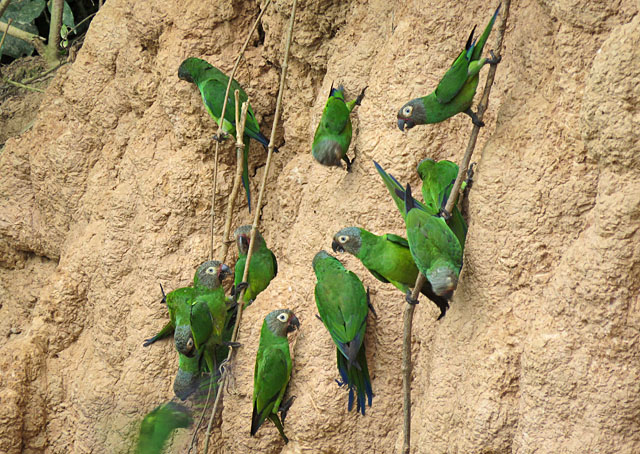
At Explorer's Inn, we kept seeing new birds and wonderful mammals every time we wandered down the trails. On our very first outing, a ridiculously cooperative Black-faced Antbird found a low perch we could all see well and sang from it for at least 10 minutes.
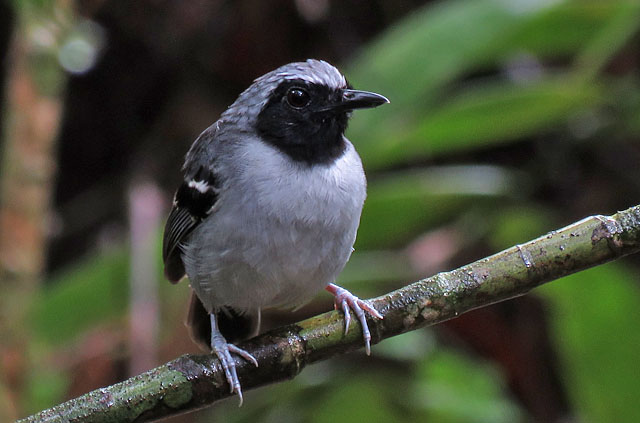
On our last day we passed by a stretch of trail not far from our cabins for the umpteenth time, but we obviously still hadn't seen everything, as suddenly there was a pair of fabulous Pavonine Quetzals right over the trail that hadn't been there on any other pass. They stayed long enough for those who had hung back at the lodge to return and see them in their resplendent beauty.
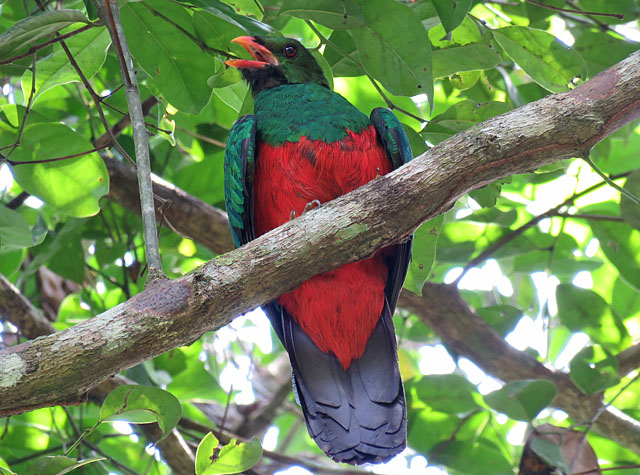
November 27:
Rich Hoyer on his just-completed tour, Peru: Machu Picchu and the Manu-Kosñipata Road
Breathtaking views of Machu Picchu were just the beginning of this year’s highlights of the tour to the department of Cusco, Peru. We had a full morning’s tour at the ruins with a delightful local guide who didn’t mind our interruptions to see Inca Wren and scan the skies for swifts.
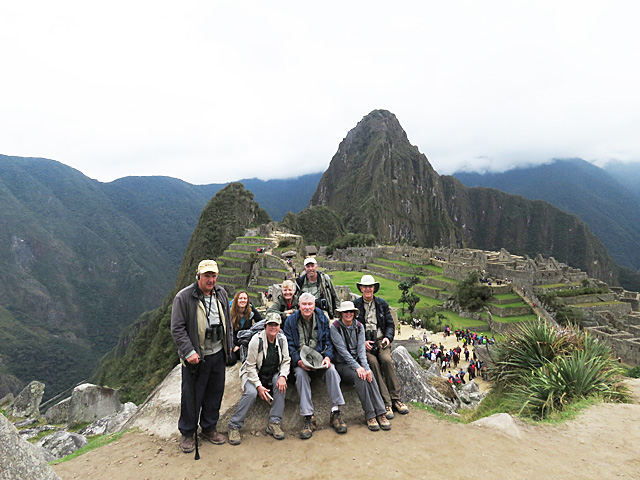
After our tour of the ruins, a walk along the Urubamba River resulted in many great birds, such as Andean Motmot, White-tipped Swift, and Collared Inca, with a pair of Torrent Ducks particularly memorable.
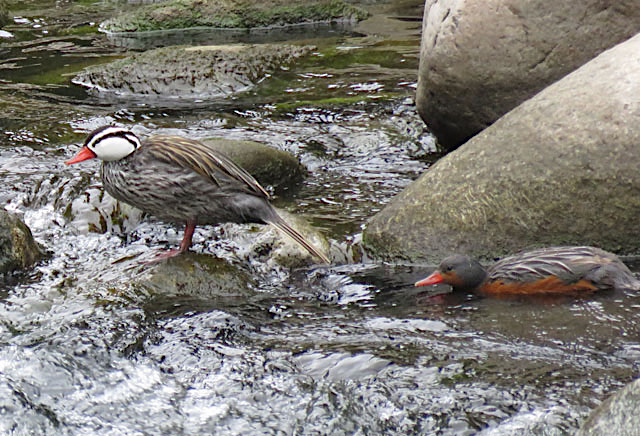
Then began our drive over the mountains and down the Kosñipata Valley, darting in and out of the boundary of Manu National Park – and thence began a daily barrage of lovely scenery and some truly memorable bird experiences. At Wayqecha Biological Station some new hummingbird feeders were already starting to attract customers, and the most common species was the exquisite Amethyst-throated Sunangel.
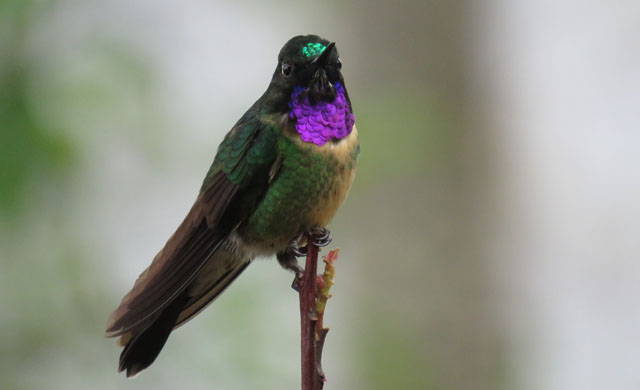
Mixed flocks at these higher elevations contained many colorful birds such as Golden-collared Tanager and the favorite Grass-green Tanager, which we each saw just once. But the equally stunning Scarlet-bellied Mountain-Tanager was in nearly every flock, often posing for great views and photos.
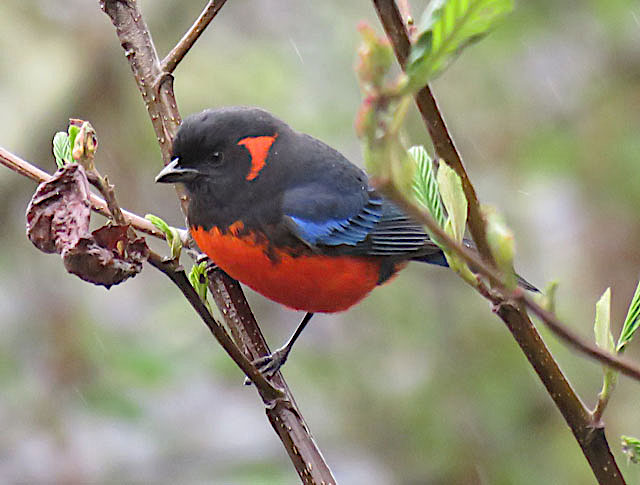
At our mid-elevation stop, mentionable highlights were two Solitary Eagles – one flying by quickly over us and another soaring at length below – and the Buff-tailed Sicklebill that appeared at staked-out clump of pendant Heliconia flowers (something which you always try but rarely succeed at). A big surprise was a Rufous-breasted Antthrush that had been singing below the road behind a curtain of impenetrable foliage. But a lucky hole and a well-pitched whistle made it pop up where we could even put the spotting scope on it.
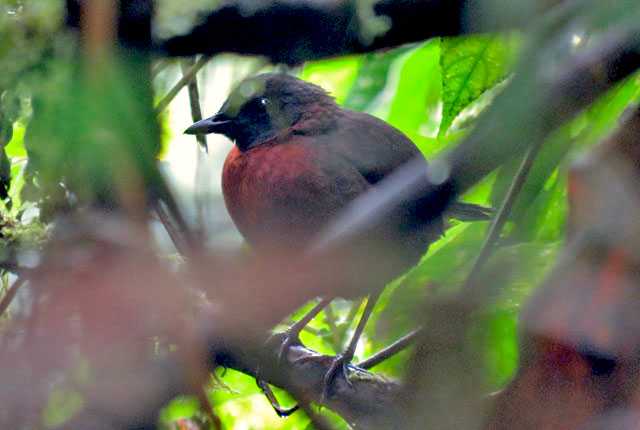
One of the main attractions at our mid-elevation lodge is the Andean Cock-of-the-rock lek, and we paid an early morning visit and experienced one of the world’s most amazing products of evolution.
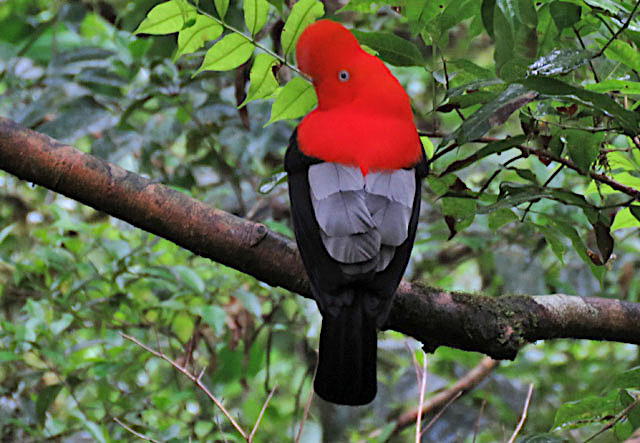
Our stay at Villa Carmen was a treat with the very comfortable rooms and great food. Perhaps the most mind-blowing thing we witnessed there was the Pheasant Cuckoo that flew towards us over a hundred yards across the Piñi Piñi River at Los Amigos, landing in a bamboo thicket just a few yards away from our astonished faces. No one expected that to happen! We added a huge number of species from the garden, the main road, and the trails passing through bamboo and other types of forest. A quietly calling trogon with an odd voice teased us for several minutes before we discovered a motionless fledgling Blue-crowned Trogon just a few feet right over our heads.
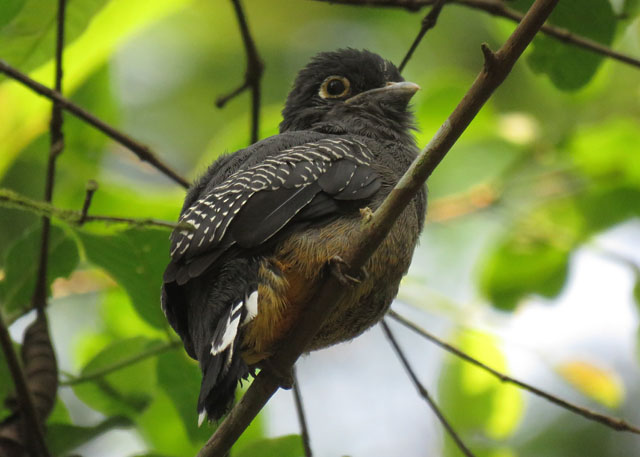
The butterflies were out of this world, for example the Panacea prola (Red Flasher) that landed on most of the participants as we paused on one of the trails.
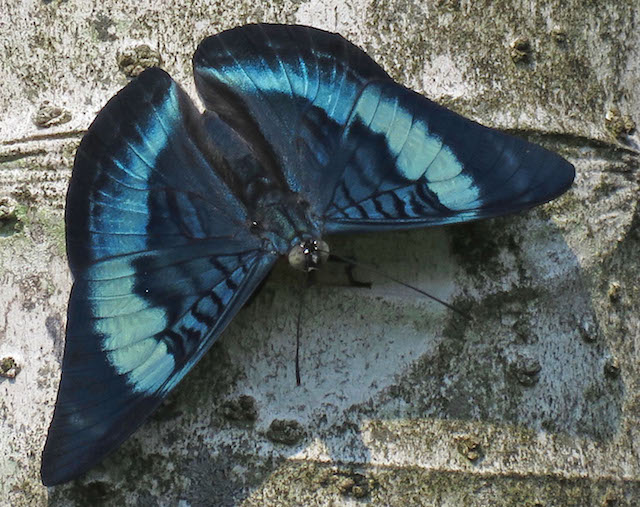
Another fun surprise find was a Black Hawk-Eagle on our last day as we began the drive back to Cusco. It was perched at eye-level just a few yards off the road, and it sat there rather indignantly as we tried to get perfect photos between the passings of noisy motorbikes and local taxis that drove between our parked bus and the bird.
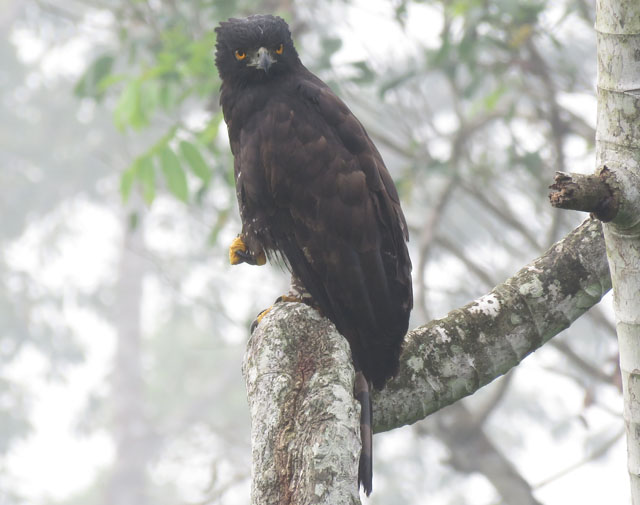
It was a particularly fun group of participants, and our wonderful driver Eliazar did a great job of keeping the bus clean and working and us safe and on time.
November 14:
Steve Howell on his and Jake Mohlmann's ongoing tour, Chile: Tierra del Fuego to the Atacama Desert
From King Penguins and Royal Albatrosses to Magellanic Woodpeckers and Many-colored Rush-Tyrants, we’ve enjoyed a wonderful trip in Southern and Central Chile. Carpets of wildflowers and choruses of birdsong have marked our days here in Central Chile, interspersed with a fabulous pelagic trip into the Humboldt Current, surrounded by record numbers of albatrosses and petrels. Here are a few images to date:
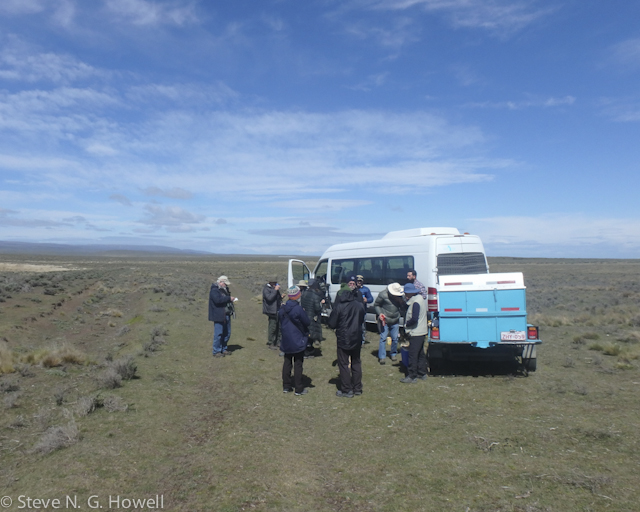
Our picnic lunch in the wilds of Tierra del Fuego, after seeing the enigmatic Magellanic Plover, and...
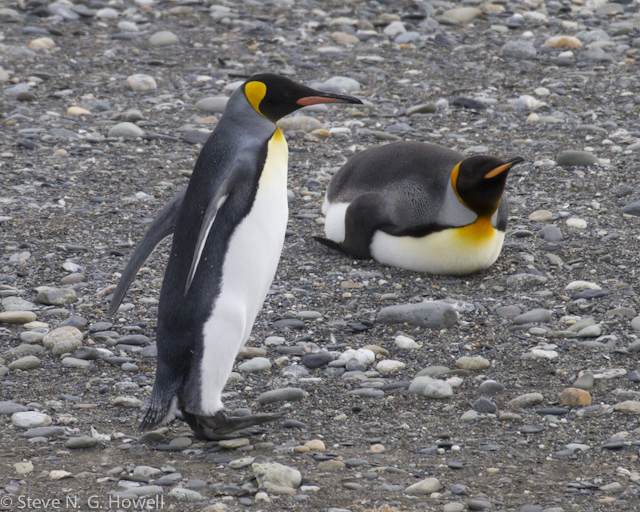
... before heading on to view King Penguins at the recently founded colony on Useless Bay.
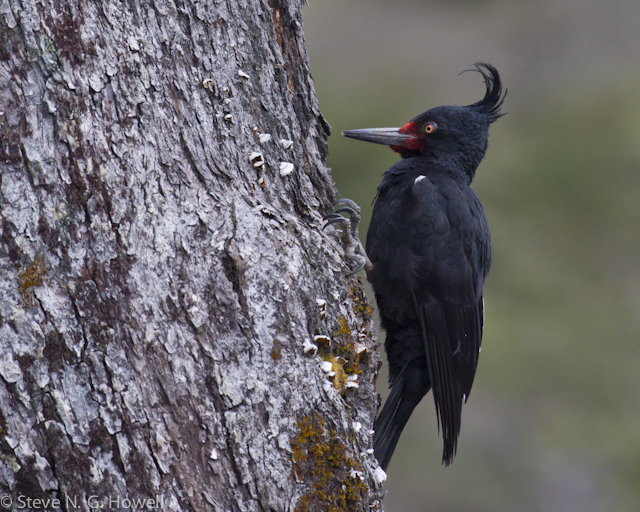
Within minutes of leaving our rooms the iconic Magellanic Woodpecker appeared wonderfully, right beside the road!
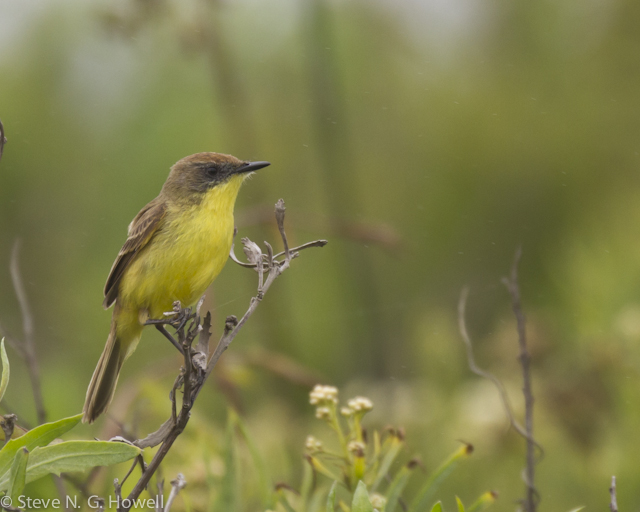
This year, the very local (and recently split) Ticking Doradito showed very well.
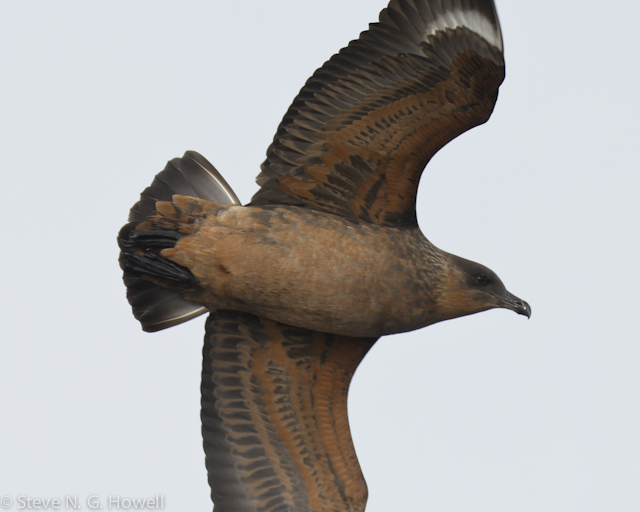
A handsome Chilean Skua passed right overhead in the Humboldt Current, ...
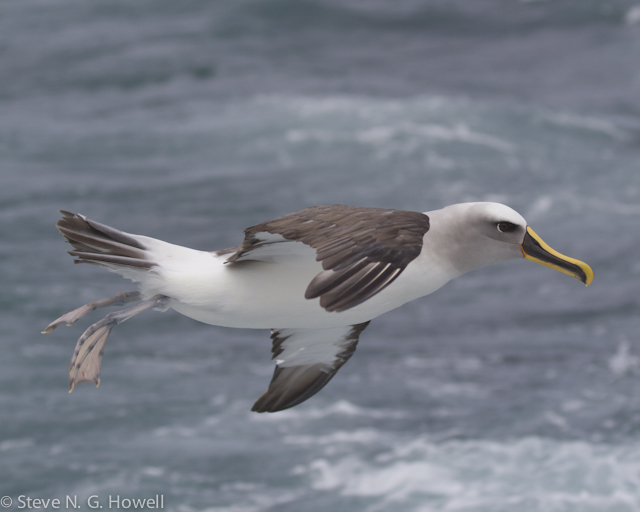
And we enjoyed repeated studies of five albatross species, included this stunning Southern Buller’s.
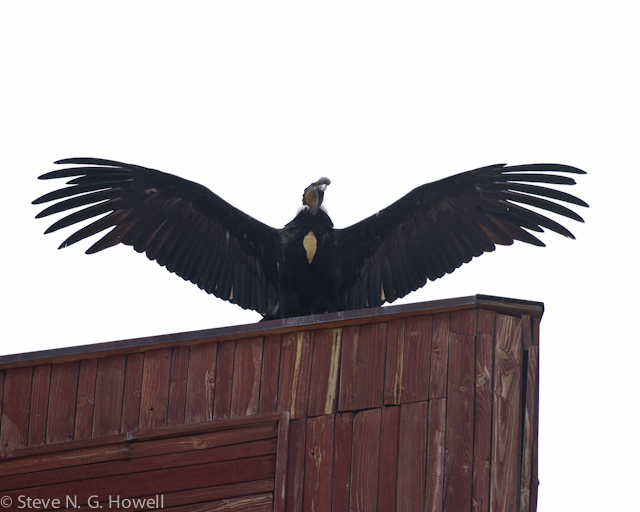
Yesterday an Andean Condor perched on a ski lodge greeted us in the Andes, before sailing off right over our heads—wow!
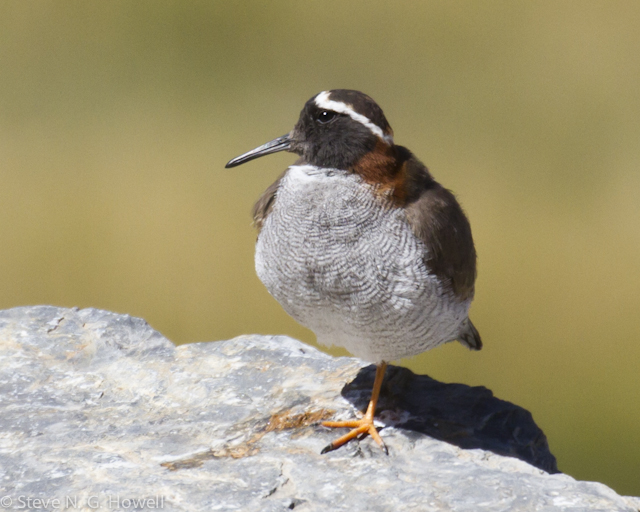
And today we found the incomparable Diademed Sandpiper-Plover in record time—less than a minute, with this image taken from the van window! Now on to the finale in Northern Chile.
November 13:
Gavin Bieber on his recently completed tour to Western Australia and Northern Territory
We spent the first week around Perth and the southwest corner of the country. A wetland park in central Perth provided our first waterbirds, including a very approachable Yellow-billed Spoonbill, a fine Buff-banded Rail and a roosting family group of Tawny Frogmouth.
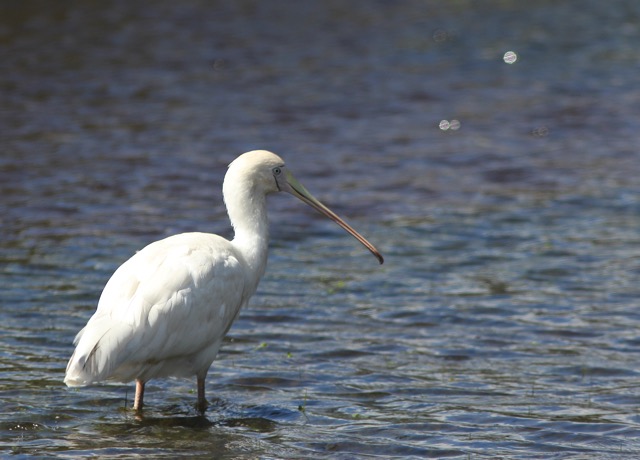
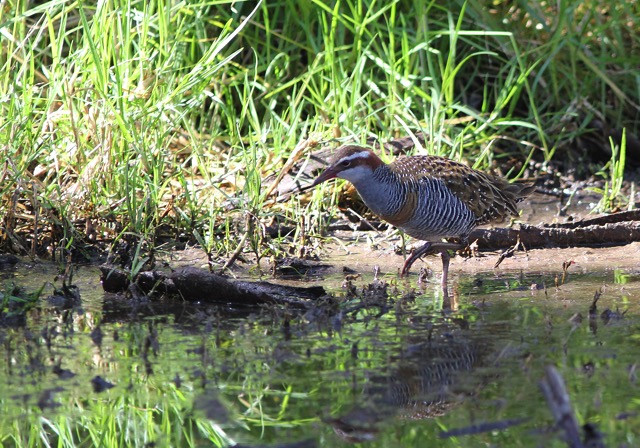
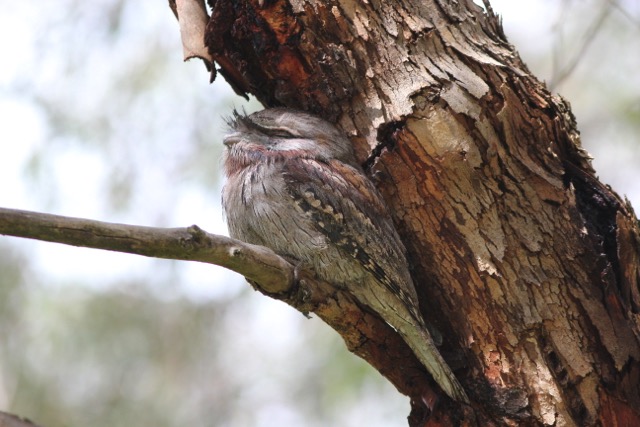
The drier forests around Dryandra and the Stirling Ranges were very productive, with repeated views of Carnaby’s (Short-billed) Black-Cockatoos and the aptly named Splendid Fairy-Wren.
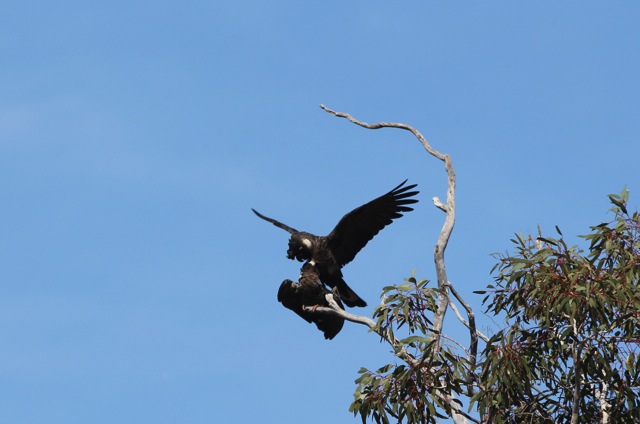
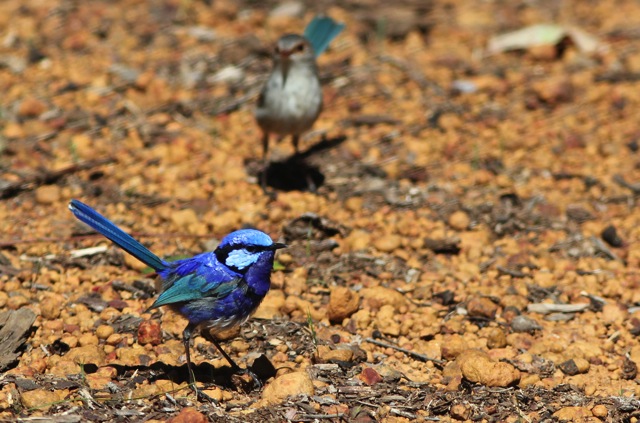
The gorgeous coastline near Cheyne’s Beach was our backdrop for several days, where we managed especially good views of Brush Bronzewing and all three of the coastal heathlands infamous skulkers.
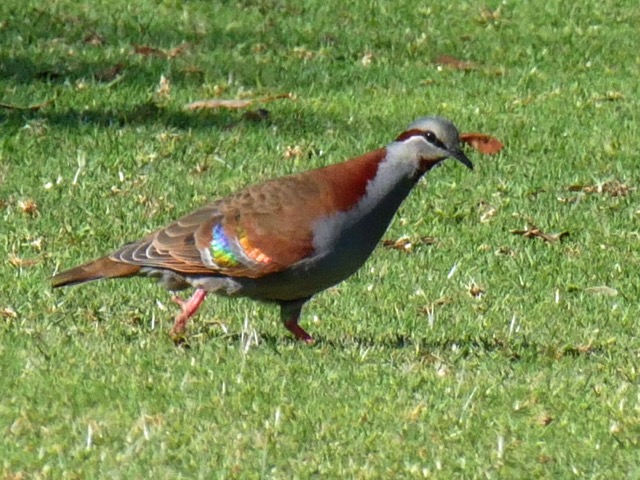
Leaving the temperate SW corner behind we traveled to the heart of the country around Alice Springs where stunning desert landscape hosted an array of fantastic species such as the comical Spinifex Pigeons, charismatic Dusky Grasswren and intricately patterned Western Bowerbirds, here seen in mid display at a bower in the botanical gardens.
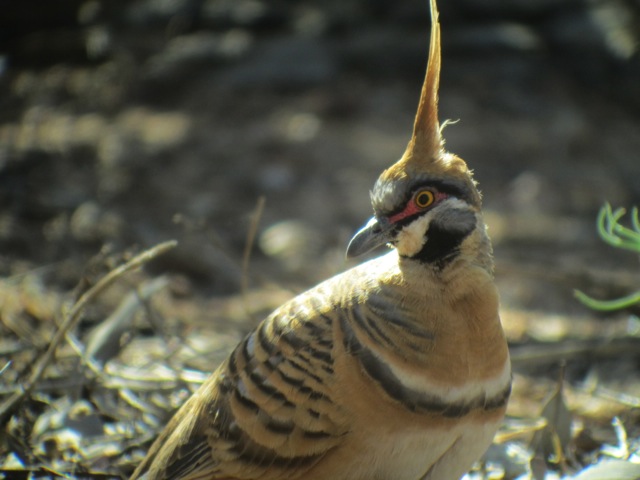
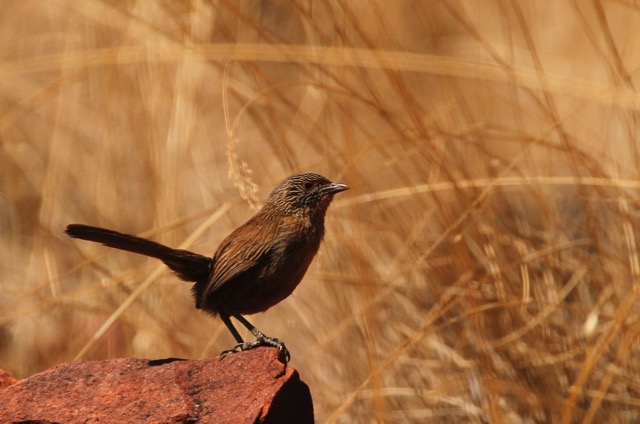
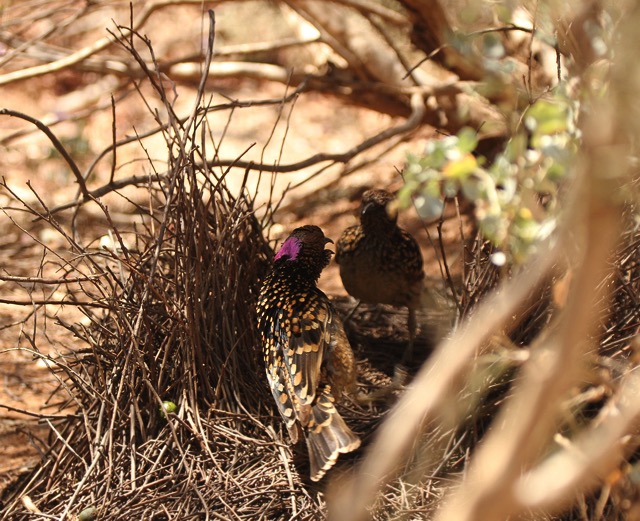
Our second week covered the tropics of the Top End around Darwin and the outpost town of Kununurra, near the East end of the Kimberley Mountains. These diverse habitats yielded aremarkable array of birds and mammals and the humid and comparatively lush lands surrounding Darwin seemed especially stuffed with new birds. Waterbird concentrations were excellent, with hundreds of Magpie Geese surrounding the remaining patches of water and waiting for the arrival of the rainy season. Rainforest patches around Darwin hosted gorgeous and somewhat approachables Rainbow Pittas, and in the Botanic Gardens we located both Barking (below) and Rufous Owls on day roosts.
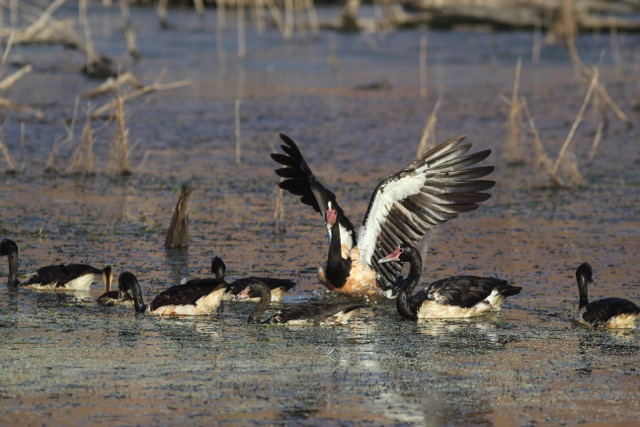
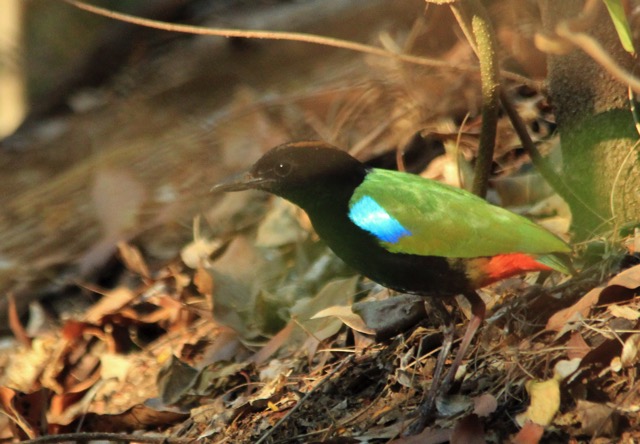
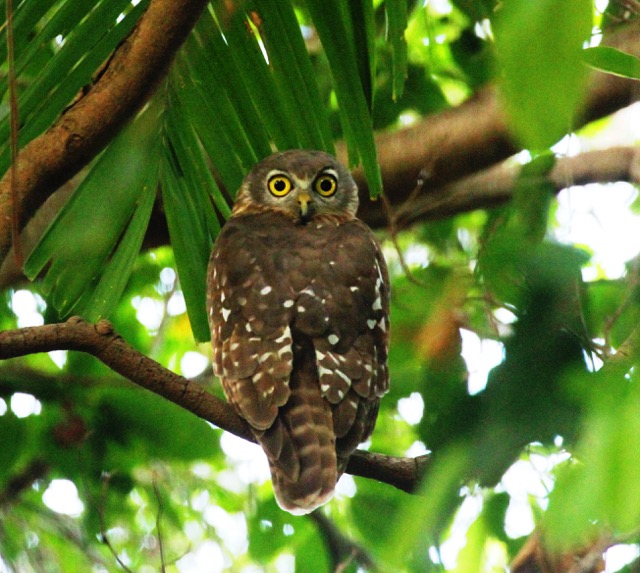
Kununurra had the feel of a real outback town, with isolated and very beautiful grottos, and almost comically swollen Baobab Trees dotting the savannahs. Although it was very dry this year, we still found 10 of 11 species of finches possible in the area (including the fabulous Gouldian (below) and the scarce Yellow-rumped Mannikin), and the day trip out to Lake Argyle went extraordinarily well, with dozens of Yellow Chats, a few White-quilled Rock Pigeons and tame Short-eared Rock Wallabys.
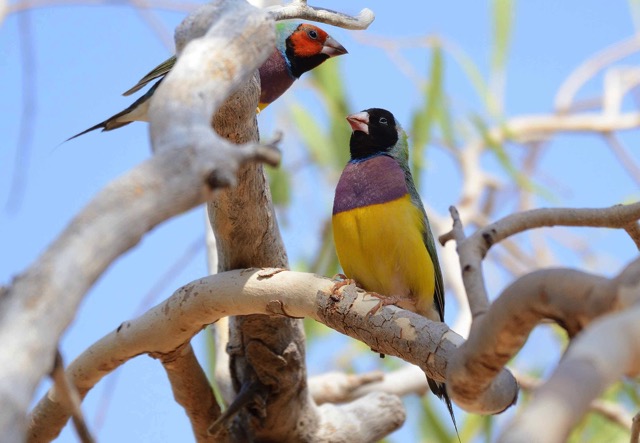
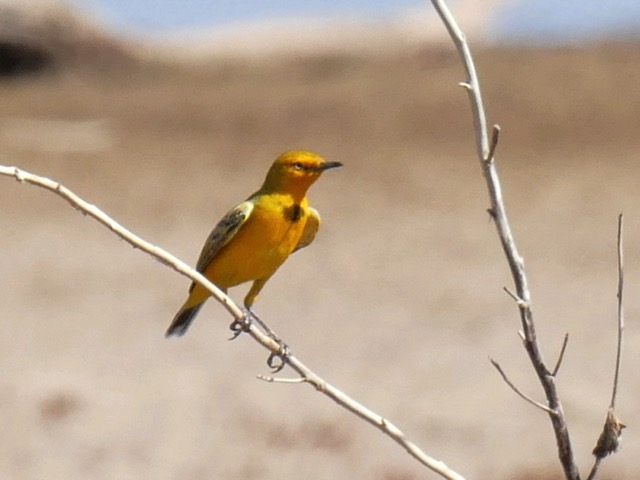
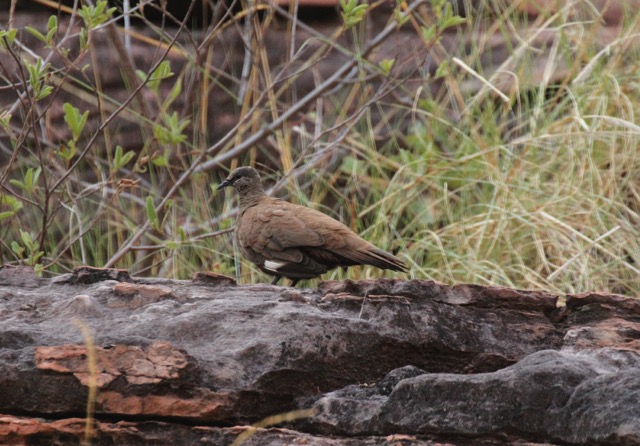
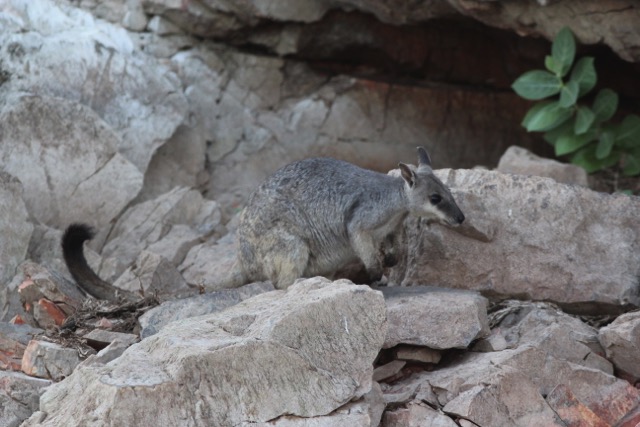
We wrapped up the 17 day itinerary back in Darwin, with an amazing 325 species seen!
Since my camera failed early in the tour, I owe thanks to my co-leader Tim Dolby and especially Bob Pease (Bush Bronzewing,Rainbow Pitta, and Yellow Chat) for the use of their images.
November 12:
Jake Mohlmann on his just-completed tour to Northern Argentina - High Andes, Chaco and Iguazú Falls
On our recently completed tour through northern Argentina we encountered 429 species of birds as we scoured lush cloud forest, arid altiplano, dense Chaco thickets, and riverine rainforest.
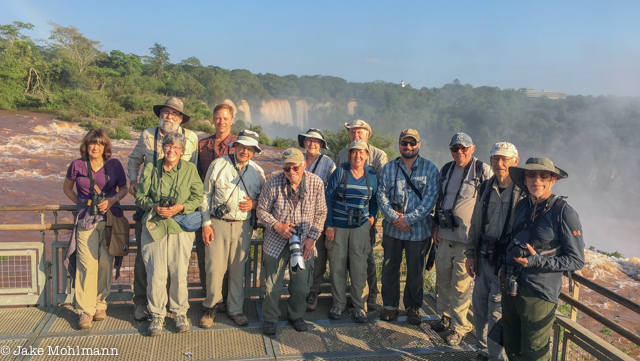
Our group was delighted to have Iguazú Falls all to ourselves
Four days based in the Yungas forest produced a fine list of birds and one particular experience had us all slapping high fives at the end. While quietly watching a Rufous-throated Dipper carefully hold on to the slick rocks while somehow foraging in the raging waters of the Yala River, we noticed a family of Torrent Ducks, including 2 recent youngsters, struggling upriver within a few meters of our group and setting off a picture-taking frenzy. We were wondering why they were so 'tame' when we realized we're weren't the most feared creatures on the river bank. A hungry Tayra, a three foot long member of the weasel family, was working the riverbank nearby. Immediately after this encounter several range-restricted Red-faced Guans hurled overhead and perched on moss covered branches for a trifecta of specialties.
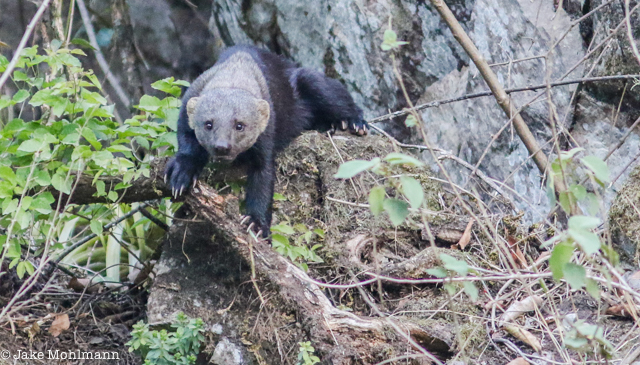
A Tayra lurks on the riverbank
Hummingbirds were in good supply this year with 16 species visiting an abundance of flowering plants; highlights included the dainty Slender-tailed Woodstar, the jet Black Jacobin, the near Bolivian endemic Wedge-tailed Hillstar, and the ridiculously colorful Red-tailed Comet.
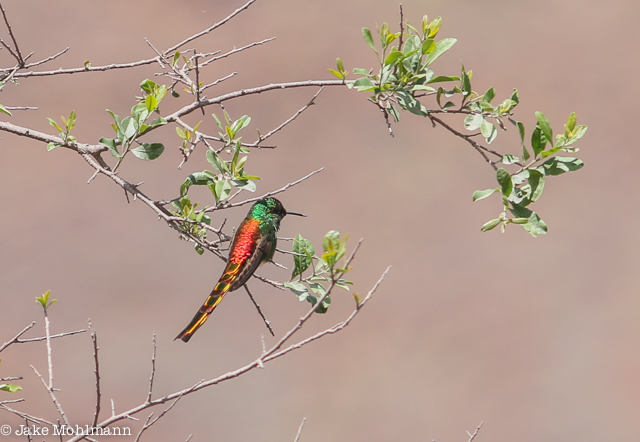
A male Red-tailed Comet poses for pictures
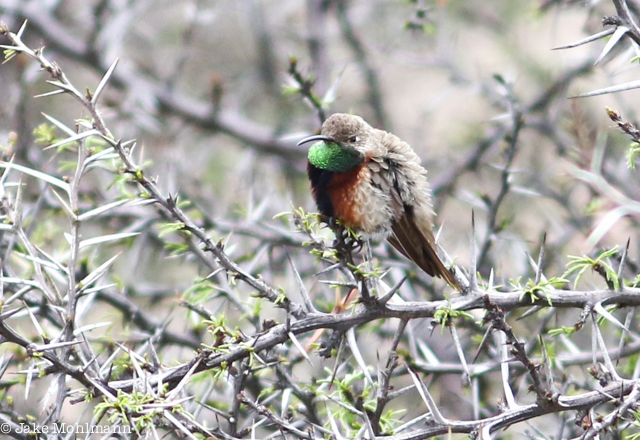
With 99% of its range in Bolivia this Wedge-tailed Hillstar was a welcome treat
The high Andean altiplano hosted a horde of species including three varieties of flamingo including Andean, Chilean, and James’s. At one of the high elevation bogs near the Bolivian border, a pair of Diademed Sandpiper Plovers appeared (before we could get out of the car!) and foraged very closely before taking flight far down the canyon. Nearby another high altitude specialty was heard, then seen, and we watched a trio of Rufous-bellied Seedsnipe work through a moist vegetation.
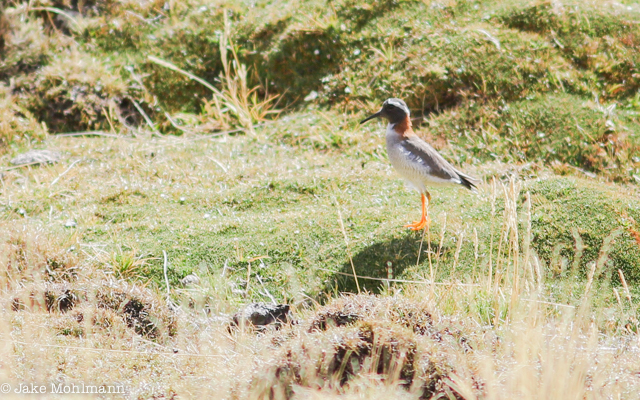
Diademed Sandpiper Plover
We spent several days in the unique Chaco habitat where this year we encountered both members of the highly sought after family Cariamidae: we watched at length both Red-legged and Black-legged Seriemas taking breaks from screaming their dog like ‘songs’. Other birds unique to this region were the vibrant Many-colored Chaco Finch, the enormous Great Rufous Woodcreeper, and the docile Spot-backed Puffbird.
It’s also worth noting that we actually saw five species of tinamous, quite a feat for any birding trip. These included bright-billed Tataupa, Ornate, Red-winged Huayco, Andean, and the regal Elegant Crested, with young in tow.
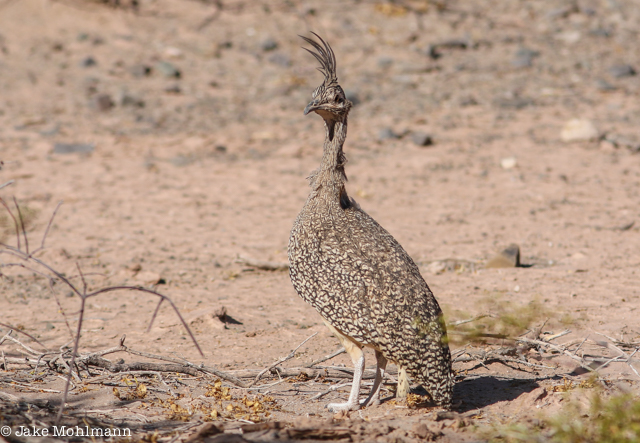
An adult Elegant Crested Tinamou stands guard with chicks nearby
Our final days were spent exploring the various roads and trails weaving through Iguazu National Park and getting exposure to an entirely new set of birds. Having the upper falls trail all to ourselves before the masses arrived one morning was a wonderful experience we’ll not soon forget!
October 10:
Susan Myers on her on-going tour, Indonesia: The Moluccas
The inaugural Wings tour to the far flung islands of the Moluccas in east Indonesia is about half over and so far it’s been nothing but an outstanding success! I’m writing this from my comfortable hotel room on the little known island of Kai Kecil, from where we ventured out this morning to the neighboring island of Kai Besar. Our main target was the diminutive Little Kai White-eye, sometimes perhaps more romantically known as Pearl-bellied White-eye. A speedy boat trip took us to the sleepy town of Bombai and we climbed on board the little local bus that took us for a bumpy, but fun, ride up to Bukit Indah – the Beautiful Hill. The hill is still cloaked in wonderful floristically diverse tropical rainforest and we soon connected with the small island endemic whilst taking our morning tea. We then turned our attention to some other fancy specialties of these islands of Wallace fame, which are such hotbeds of faunal diversity shaped by millennia of natural selection. All the while we were accompanied by an astounding array of different and fancy butterflies. An early encounter with the scarce Kai Cicadabird (or Cuckooshrike) created much excitement and we chased this very handsome member of the caterpillar-eater family as it flitted through the trees – presumably living up to its name, disappearing and then reappearing on cue. Later we found our first Varied Trillers (a possible future split?), Black-faced Friarbirds, Island Monarchs, Kai Coucal and very cute Yellow-capped Pygmy-Parrots. Maybe the biggest hit for the morning, though was a stunning White-tailed Monarch, another fascinating endemic of the amazing islands of Maluku!

The fast boat to Kai Besar
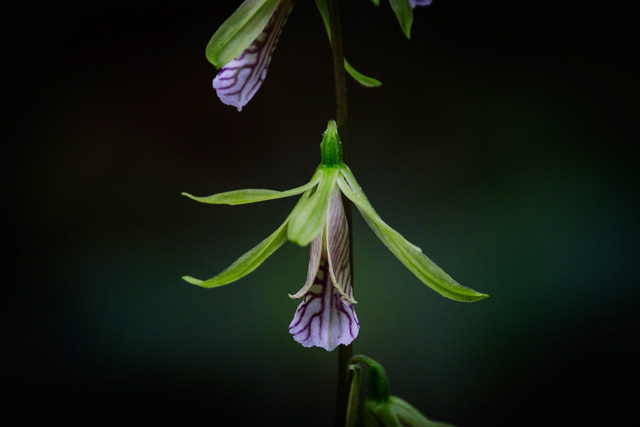
An unknown but spectacular orchid emblematic of the natural richness of the Moluccas

Morning tea in the field with our helpful crew

Searching for the Kai Coucal
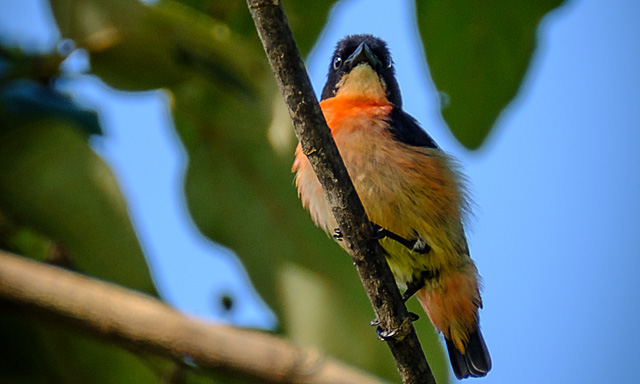
Mistletoebird, or Salvadori’s Flowerpecker if split
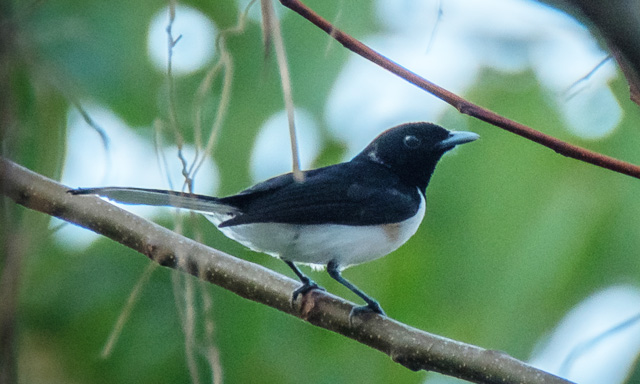
White-tailed Monarch
October 9:
Rich Hoyer on his recently completed tour, Ecuador: The Amazon Lowlands
There may not be any pronounced dry season on the Equator in the Amazon Basin, but if there was one week-long dry spell this year, we found it. It was hot as usual in the tropics, but that was an even tradeoff for not being forced to take time off due to rain. It was a wonderful week that passed by all too quickly, filled with great birds and some incredible tropical diversity in the way of lizards fighting on trees, killer mushrooms invading insect brains, and a very friendly, almost even loving, Amazon Tree Boa. We saw some marvelous birds at the canopy platform, such as a perched Orange-breasted Falcon and Yellow-billed Nunbirds, while along the various trails elusive species such as Collared Puffbird, Wire-tailed Manakin, and Black-faced Antbird performed well. Super delightful were the several boat rides on the lake (cocha) and stream (yacu), where rare kingfishers such as American Pygmy and Green-and-rufous were ridiculously abundant and easy to see. But we didn’t have to go far from our rooms (or the lodge’s bar) to enjoy some of the best birding in the area – with the exception of the Orange-breasted Falcon, all of the following photos were taken right around the lodge’s buildings.
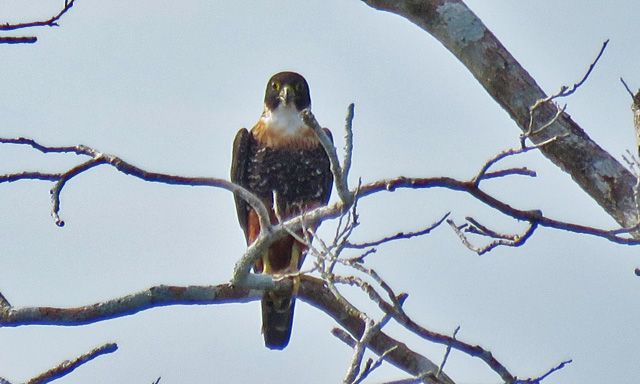
Orange-breasted Falcon
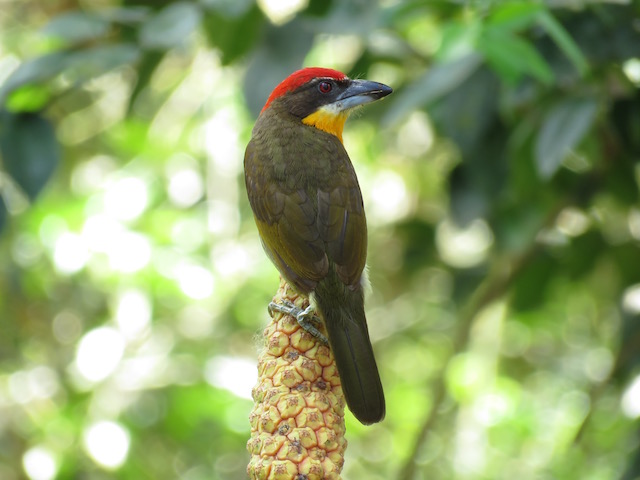
Scarlet-crowned Barbet
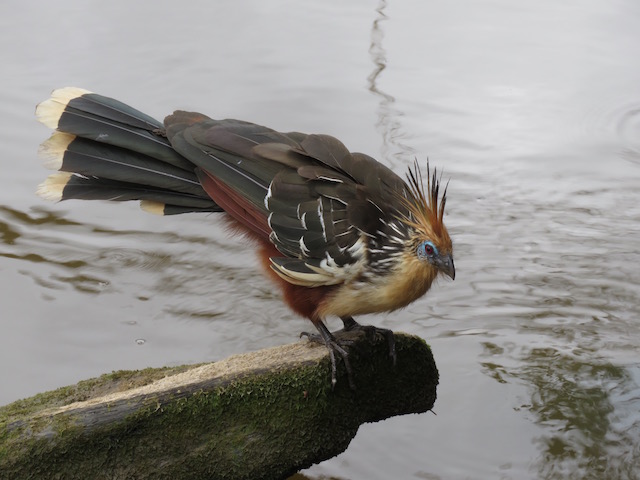
Hoatzin
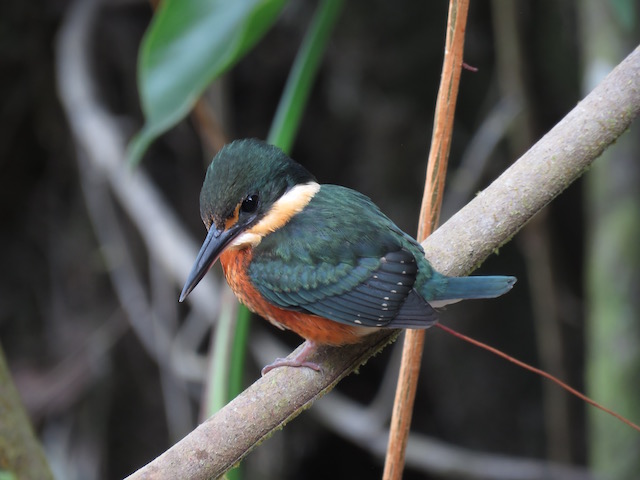
American Pygmy Kingfisher
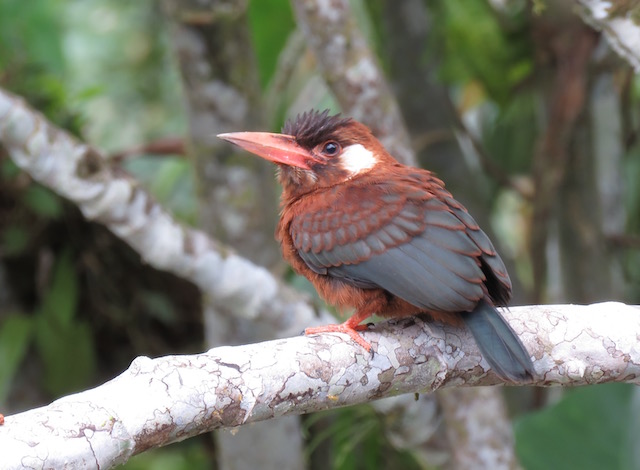
White-eared Jacamar
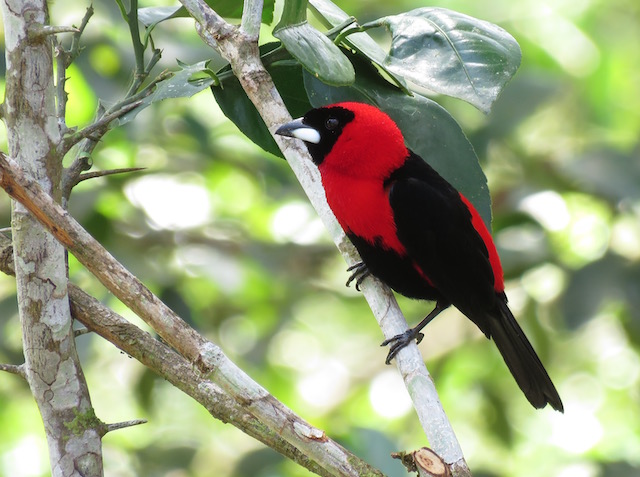
Masked Crimson Tanager
October 7:
Rich Hoyer on his recently completed tour, Costa Rica
Costa Rica in July was the perfect summer getaway offering an amazing selection of tropical species in an agreeable climate. We had nearly flawless weather throughout, beginning and ending in refreshingly cool higher elevations. There were so many wonderful experiences with the birds we saw that there was no outstanding favorite. Great Tinamous singing their haunting songs (audible from our rooms), Snowcaps darting amongst the porterweed flowers, a Crested Owl called into view at Celeste Mountain Lodge, and adorable Pied Puffbirds near Maquenque received high votes. This exquisitely cute Central American Pygmy-Owl took the prize with the most votes on the tour, but just barely.
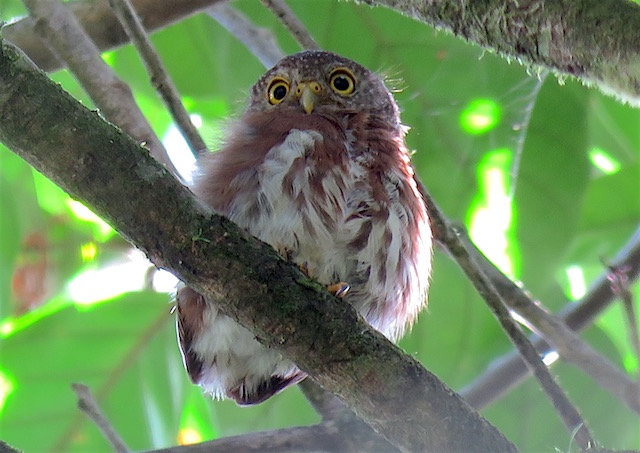
We had one of the most unexpected birds of the tour within the first hour of birding and just down the street from our San José area hotel when a juvenile Bicolored Hawk flew in and landed for extended views.
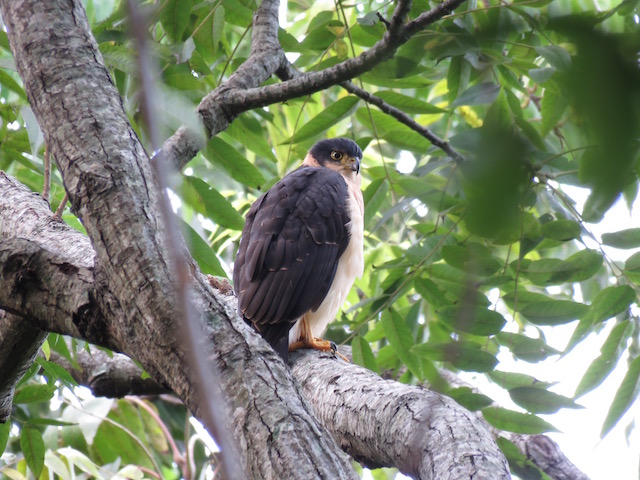
In the Cerro de la Muerte Highlands, we soon connected with several Resplendent Quetzals, getting our best views right from our rooms.
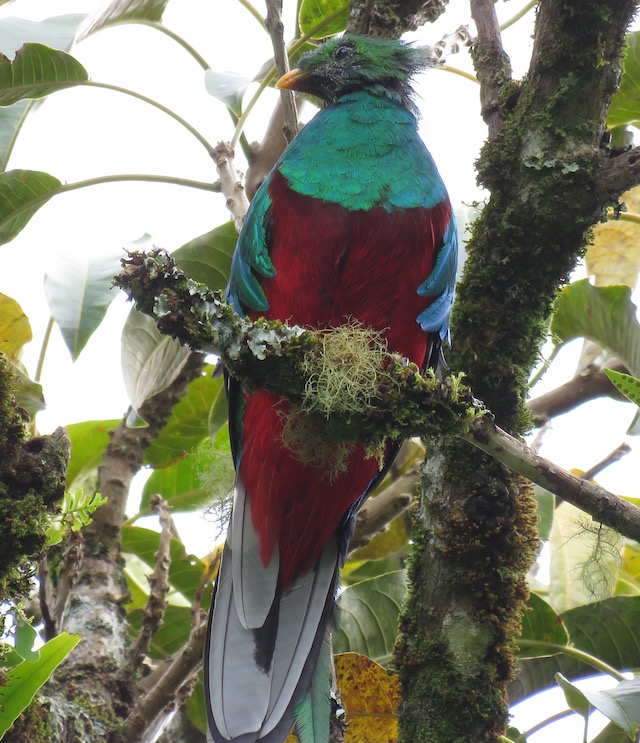
The recently split Northern Emerald-Toucanet was one of the highlights we came across in our quest for the quetzal.
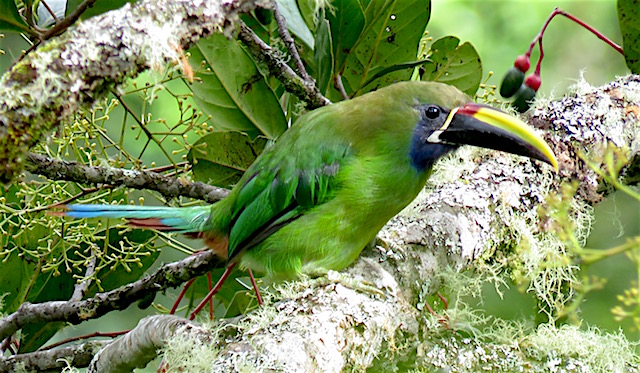
The hummingbirds at Rancho Naturalista were tops, including both Black-crested and the very rare White-crested Coquette, as well as the incomparable Snowcaps. Our time in Tortuguero National Park began with a wonderful night boat ride on the canals where we our capitán showed off his skills at spotting many roosting birds, including a juvenile Rufescent Tiger-Heron and this sleeping American Pygmy-Kingfisher.
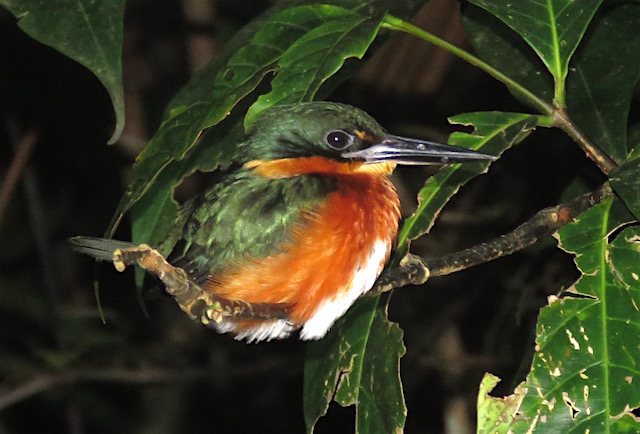
There was nothing wrong with the one morning downpour we waited out at Tortuguero, especially when the clearing of the skies was coupled with a Black-and-white Hawk-Eagle leaving the park’s forest for its morning soar. The weather held out for our memorable viewing of a Green Sea Turtle laying eggs in her laboriously excavated nest that same night. One of the most-viewed and liked videos leader Rich Hoyer ever posted to Facebook was of this Bare-throated Tiger-Heron going into its “sun salutation” pose from the roof of the boat dock at our jungle lodge. The video can be seen here: https://youtu.be/NgpgI7cDTtQ
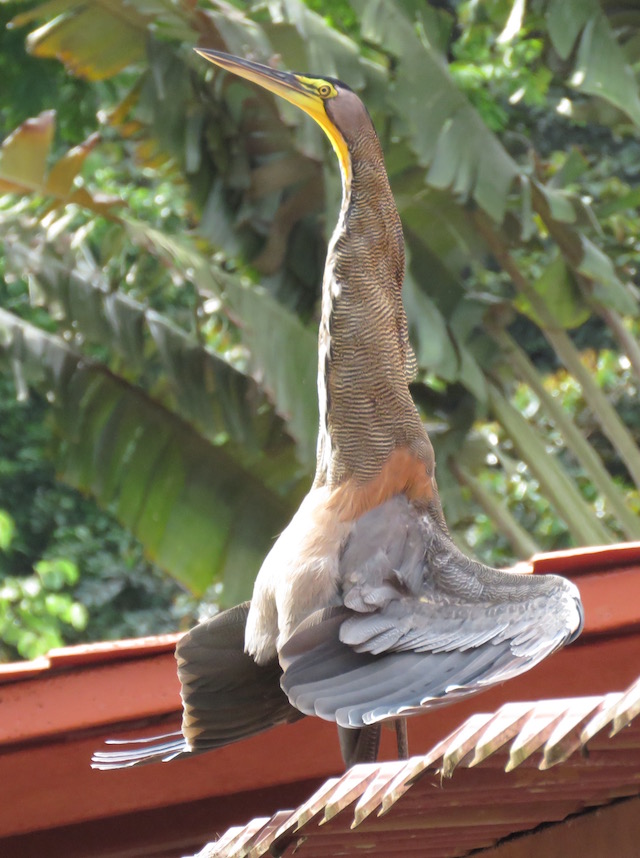
And thanks to our boatman’s amazing vision we were able to see a handsome Black-and-white Owl on its day roost.
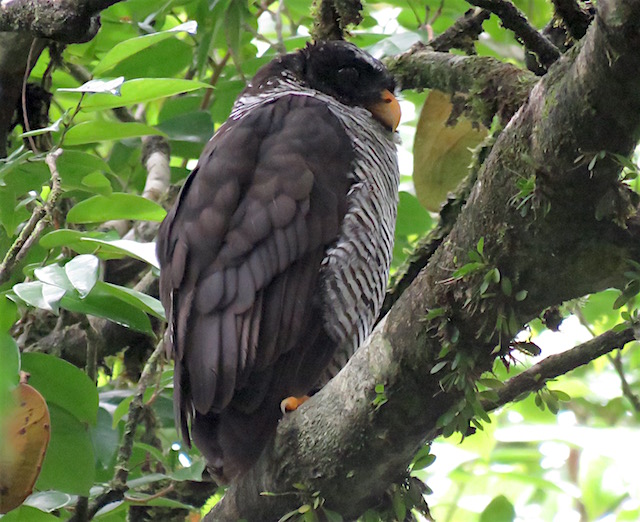
Maquenque Lodge’s dining hall was a great place to get your fill of gaudily plumaged birds, such as Purple Gallinules feeding chicks just below the building or like this Crimson-collared Tanager at the bananas.
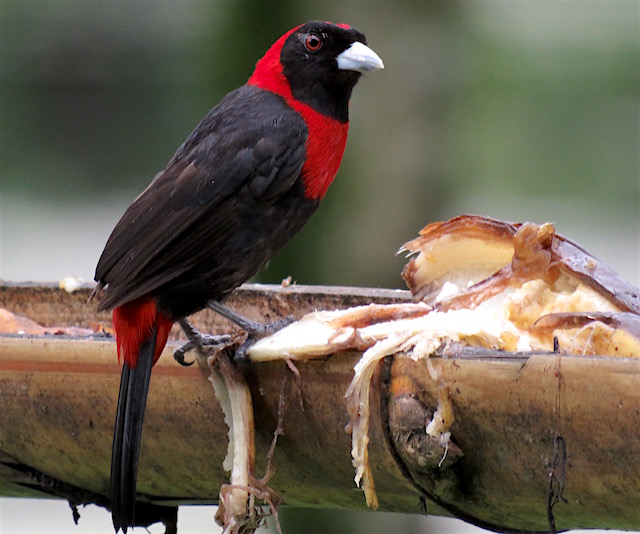
The tour was so much more than just birds – the moths at Rancho Naturalista were out of this world, with a the huge and gorgeous silk moth Copaxa rufinans the highlight.
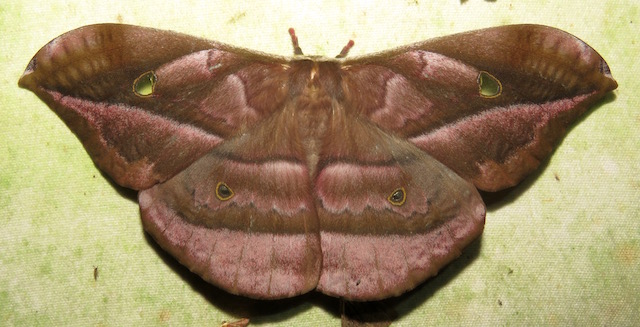
We didn’t see many snakes, but the most memorable encounter was a tiny Cope's Vine Snake gingerly threading its way through the vegetation at Tenorio National Park.
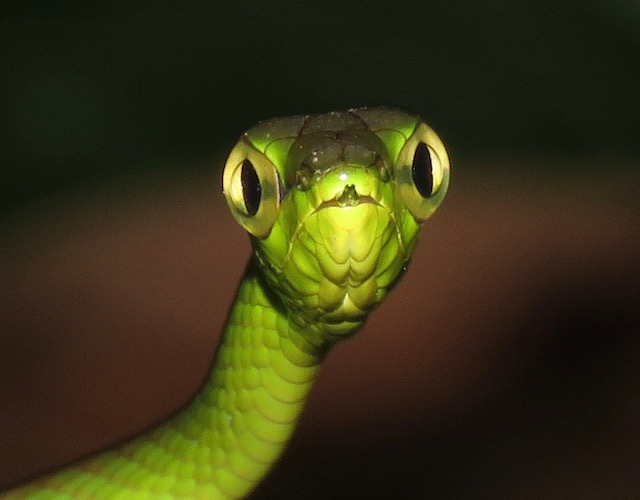
And finally, this mother and her baby Hoffmann's Two-toed Sloth were spotted by our driver, who was birding with us for the morning. The video of them cuddling was also one of Rich’s most watched videos, which can be seen here: https://youtu.be/NgpgI7cDTtQ
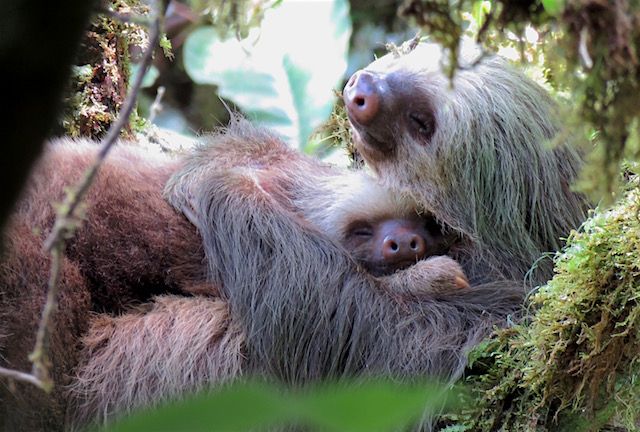
October 1:
Fabrice Schmitt on his just-completed tour, Colombia
It was another fantastic tour to Colombia! Visiting the three cordilleras, crossing both the Magdalena and Cauca valleys, birding from sea level to 15,000 feet elevation, and even adding a few days in the isolated Santa Marta and Guajira Peninsulas, we had an amazing overview of the Colombian avifauna.
Our group at 15,000 feet in Nevado del Ruiz National Park
Superb cloud forest in the Western Cordierra
Sunset in the Santa Marta Cordillera
It’s hard to pick the best birds of the trip amongst hundreds of wonderful species, but here are the top ten as voted by the group: Santa Marta Screech-Owl, Rosy Thrush Tanager, Ocellated Tapaculo, White-whiskered Spinetail, Buffy Helmetcrest, Santa Marta Antpitta, White-headed Wren, Chestnut Piculet, Munchique Wood-Wren, and tied for ninth place, Dwarf Cuckoo and Blue-naped Chlorophonia.
Santa Marta Screech-Owl - Image: Bruce Sorrie
Rosy Thrush-Tanager
Munchique Wood-wren
Dwarf Cuckoo
We visited more than 10 different hummingbird feeding stations and saw no fewer than 57 species of these fascinating birds!
Tourmaline Sunangel
Long-tailed Sylph
Violet-tailed Sylph
Velvet-purple Coronet
We also visited several antpitta feeders, allowing great views of several members of this secretive group.
Chestnut-crowned Antpitta
Santa Marta Antpitta
Bicolored Antpitta
We were amazed as well by the remarkable range of flowers, orchids, grasshoppers, butterflies, moths, etc. Colombia is definitely THE biodiversity country!
One of the numerous glass-winged butterflies
One among many, many species of orchid
August 1:
Rich Hoyer on his recently completed tour, Brazil: Marvelous Mato Grosso
This year’s Marvelous Mato Grosso tour was amazing. Each of the four areas we visited provided indelible memories of fabulous birds, mammals, and other critters. On our first stop at the Chapada dos Guimarães we connected with most of the cerrado specialties such as Coal-crested Finch and Chapada Flycatcher and enjoyed the marvelous scenery and the best food of the tour at our wonderful lodge nestled in the middle of the national park. Among the favorite birds we saw there was the stunning Helmeted Manakin.
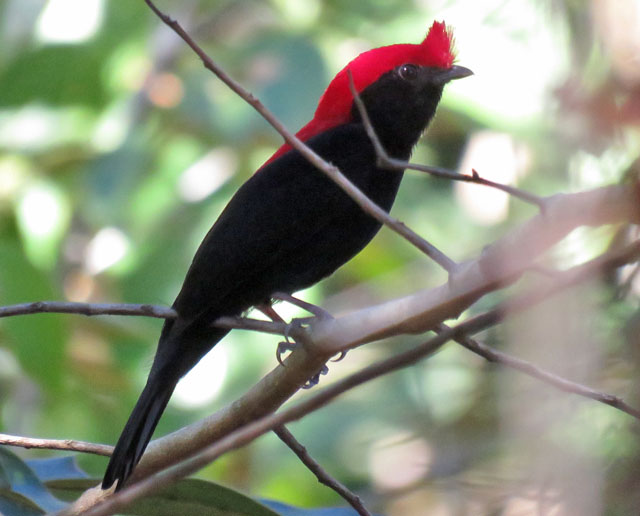
Helmeted Manakin
Cristalino Jungle Lodge was even more amazing, and we’ll probably never repeat this year’s unbelievable sightings of Crested and Harpy Eagles in the same week. The former we discovered perched in large trees close to a trail, being mobbed by toucans, aracaris, and woodpeckers, and we had it in the spotting scope right over our heads before it flew, landing on an open branch for an even better view. Three days later, the Harpy was found by two of the boatmen running an errand, and guide Diego sped 20 minutes upriver to fetch us; remarkably the bird stayed on its riverside perch for at least 45 minutes, and we got there just in time (one minute!) to marvel at this monster of a raptor.
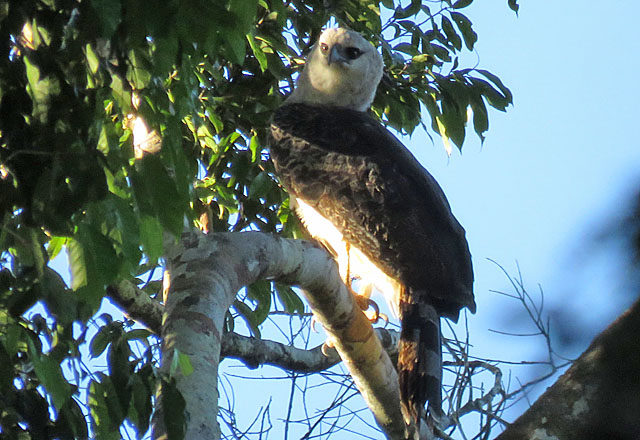
Crested Eagle
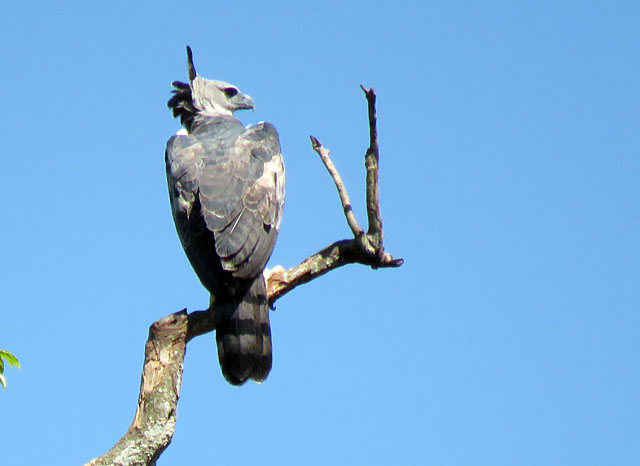
Harpy Eagle
Then came our time in the Pantanal, with so many birds and animals, and all so much easier to see than those in the Amazonian forests. The Jaguar experience was unbeatable and the best we’ve ever had – on three outings upriver from our hotel we spotted five different individuals, with excellent views of all, one even successfully catching a small caiman as we watched. With each animal’s spots like an individual fingerprint, we were amazed to discover that these were all different individuals than any of those seen on the previous seven tours we’ve taken here – now totaling 24 jaguars. The birding was fabulous too, with White-naped Xenopsaris, Hyacinth Macaw, and Great Rufous Woodcreeper among the favorites, but we were especially lucky to have one stunning Scarlet-headed Blackbird perch next to the Transpantaneira on our way back north.
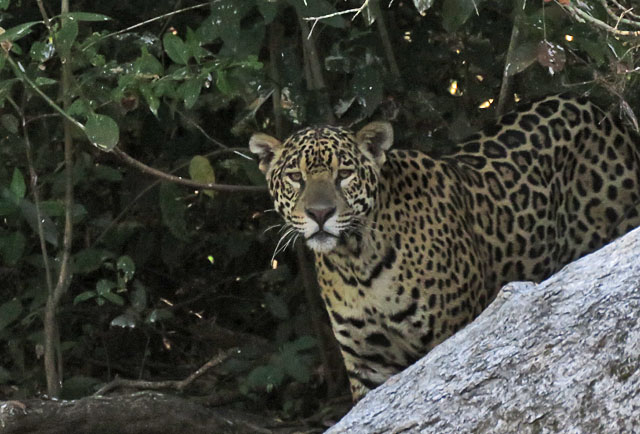
Jaguar
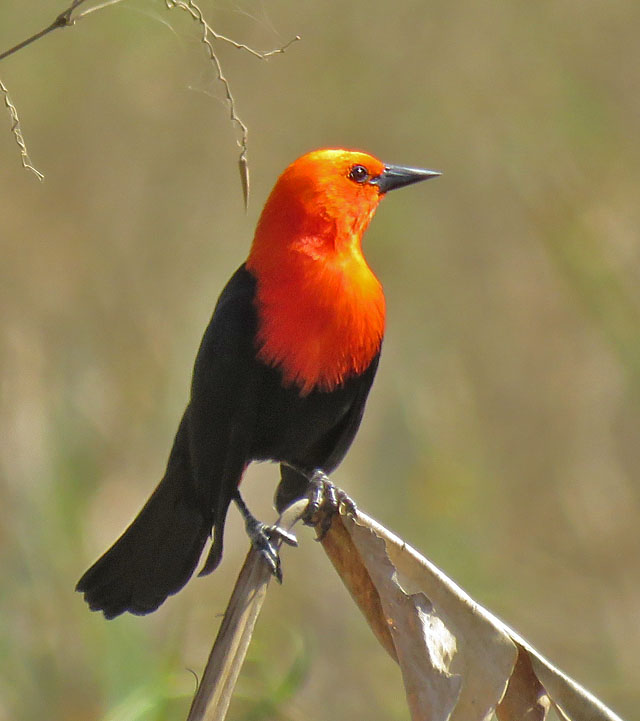
Scarlet-headed Blackbird
We finished the tour with an extension to Foz do Iguaçu, then transferring to the Argentinean side for birding and visiting Iguazú Falls. The falls were as spectacular and beautiful as imagined, as we birded our way to three different viewpoints. A Blond-crested Woodpecker, Creamy-bellied Gnatcatcher, Rufous-capped Motmot, and Black-fronted Piping-Guan were some of the highlights in the area, but we saw many other attractive, more common birds such as the stunning and unusual Magpie Tanager in the national park where they have become acclimated to people on the trails below.
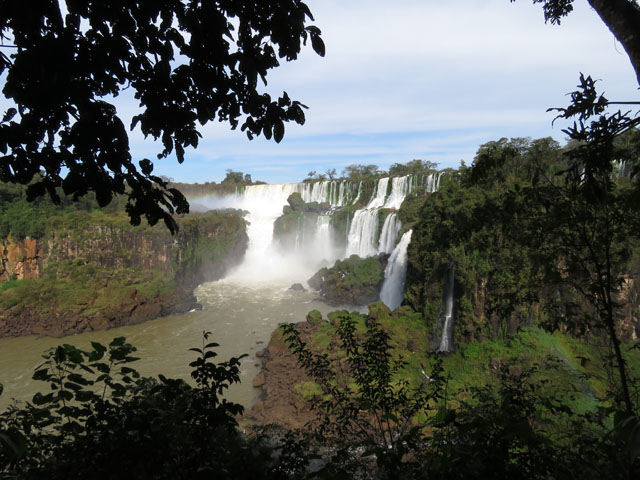
Iguazú Falls
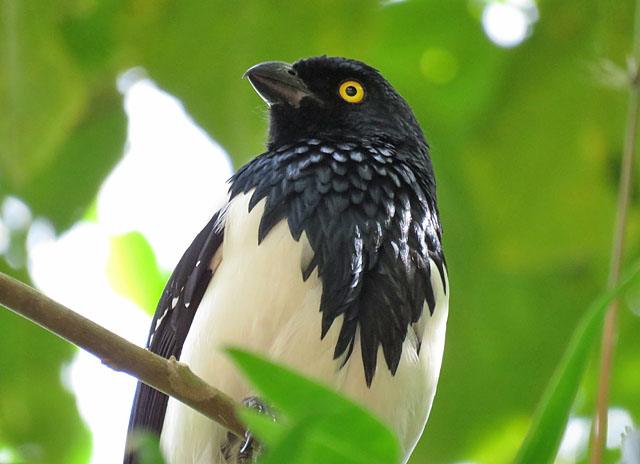
Magpie Tanager
In the end we saw or heard a mind-boggling 560 species, and I’m already looking forward to next year.

